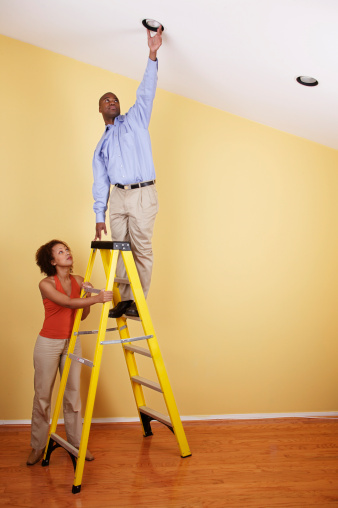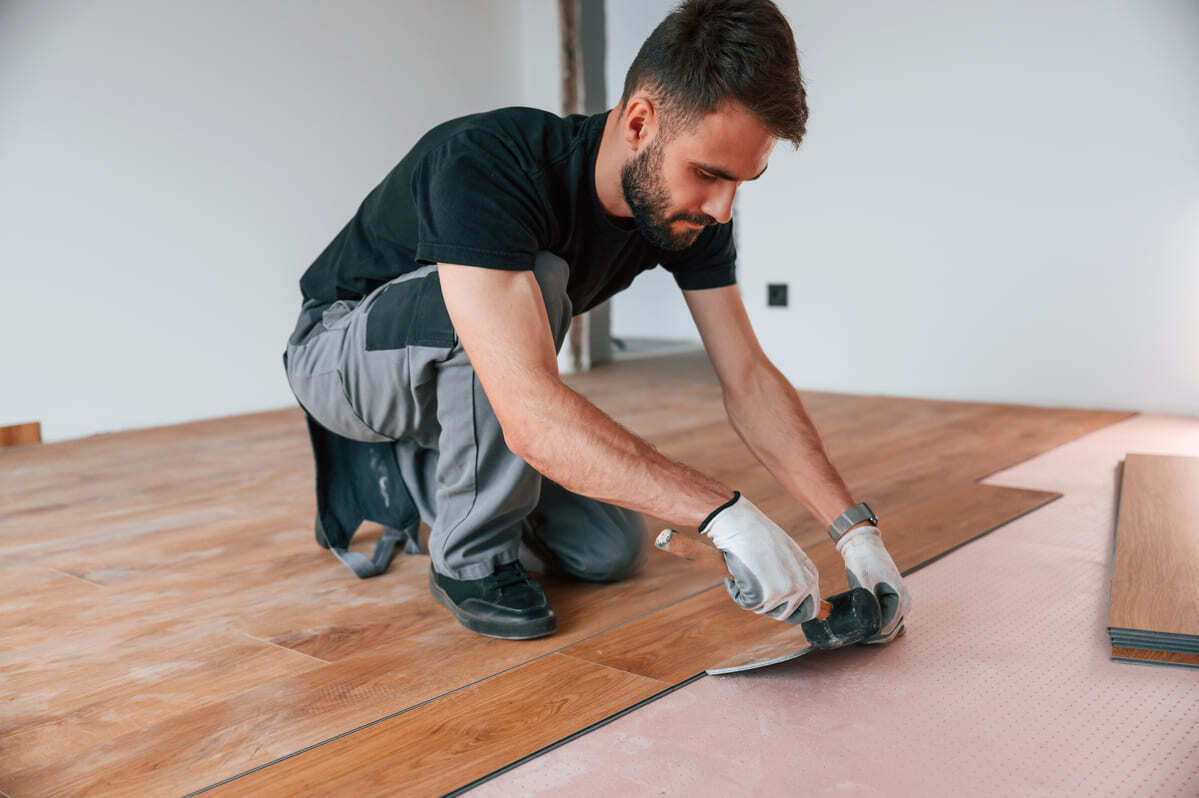 It's too big to fit in your toolbox, but it's probably one of the most valuable tools of all: a ladder, which allows you to tackle hard-to-reach electrical repairs.
It's too big to fit in your toolbox, but it's probably one of the most valuable tools of all: a ladder, which allows you to tackle hard-to-reach electrical repairs.
Unfortunately, ladders are involved in countless accidents every year, mostly because people fail to take the necessary precautions before using one or don't exercise safe practices once they climb one. In fact, the Occupational Safety and Health Administration says that most ladder accidents occur when a ladder is:
- Damaged and/or greasy or slippery
- Placed on an unstable surface
- Not unlocked properly
- Overloaded (literally)
This information ought to tell you a lot about ladder safety, but let Experts In Your Home elaborate on safe ladder practices and underscore the most important factor of all regarding electrical repairs: human error. We can't eliminate error entirely, but we can ensure that you have the knowledge and skill to tackle the electrical repair. If you don't, it's wise to reach out to a licensed local electrician. Even professionals know the other variable involved in human error: distractions, which is why it's also wise to give electrical repairs our undivided attention. If you can't, wait for a time when you can focus, especially if you're reading directions, step by step, as you proceed.
So before you take a step on a ladder, be sure to:
- Inspect the ladder for its general condition. Ladders aren't things of beauty, but they should be devoid of dirt, grease, oil and other lubricants that can lead to slips and falls. Also, check the steps for structural damage. If the ladder doesn't look sturdy, don't use it.
- Place the ladder on a firm, stable surface. This shouldn't be a problem indoors, but if you're about to proceed with an outdoor electrical repair and must set the ladder on a soft surface, such as grass, make sure that it's firm and that the ladder won't sink under the pressure of weight. If it does, stabilize the area under the ladder with a large, thick piece of wood. Think of it as setting the stage – and a safe one at that.
- Unlock the ladder by extending the spreaders to their full position. The extenders are located at either side of the ladder and allow you to literally spread it out and then fold it back up. Push down on the spreaders with both hands to ensure that they're flat and fully extended.
- Check the load of the ladder, which should be noted on the ladder by rating and type. A ladder rated for “light duty” use, or type III, can sustain 200 pounds, which includes the weight of the person climbing it as well as the accompanying tools and equipment. Light duty ladders are the most common type of household ladders. Meanwhile, a “medium duty” ladder, or type II, can hold 225 pounds; a “heavy duty” type I, 250 pounds; an “extra heavy duty” type IA, 300 pounds; and a “special duty” type 1AA, 375 pounds.
There's probably more to ladder safety than you thought. Once you've satisfied the four prerequisites above, don't forget some additional safety measures:
- Position yourself near the middle of the ladder as you climb up and down to help maintain your balance.
- Take slow steps and face the ladder as you go up and down; don't look behind you or to the sides.
- Maintain three points of physical contact with the ladder at all times, meaning two feet and one hand (the ideal) or one foot and two hands.
Next time you need a local electrician in Chico, Paradise or surrounding areas to help with your electrical repairs, contact us!
Get your free electrical safety tips by downloading the eBook below:








